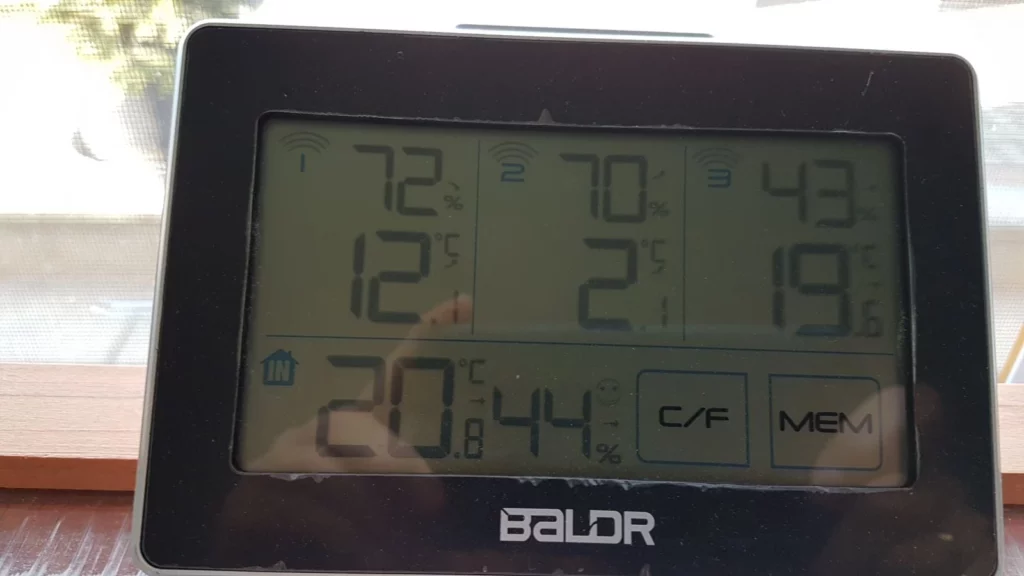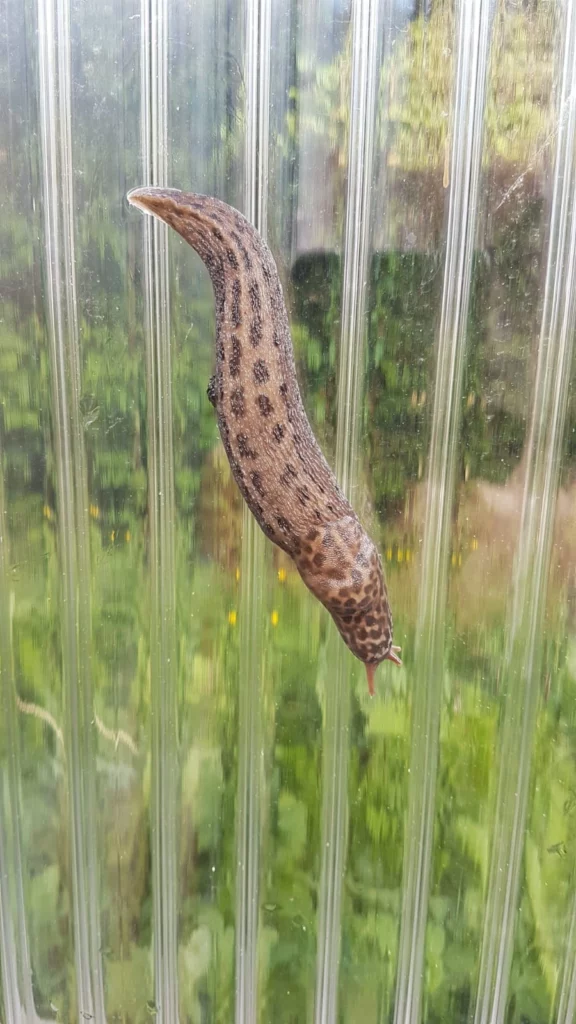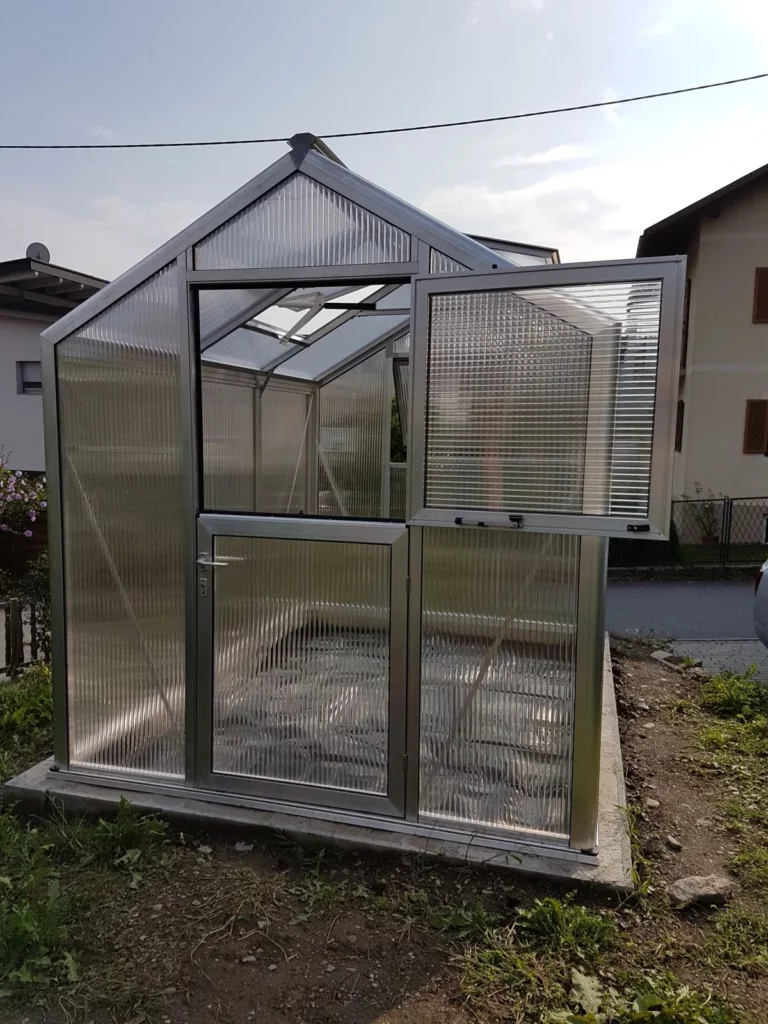Nowadays, in more and more gardens you can see a small greenhouse. The so-called greenhouse effect is used for this purpose. But what to do if you have no space (or money) for a real greenhouse? In this article, I’ll show you what the greenhouse effect is and how you can use it – on a large or small scale. I also go over basic cultural operations like fertilization, irrigation, and mixed cropping in conjunction with the greenhouse effect.
At a glance
- Greenhouse effect – what is it actually? The greenhouse effect describes that the heat radiation of the sun is not completely absorbed by the earth but a part is reflected. Of this part, in turn, does not all disappear into space, but a part is radiated back to earth by the atmosphere and increases the warming.
- Greenhouse – different types for the home garden: To take advantage of the greenhouse effect, there are several options: Glass houses, houses with web panels, cold frames, foil tunnels, small foil houses or even cultivation hoods.
- Irrigation: Due to the higher temperature, irrigation is an important issue in greenhouse gardening. Methods that directly moisten the soil, such as pearl hoses or drip irrigation, are particularly suitable.
- Fertilization and soil cultivation: Since a lot of biomass is produced in the greenhouse, care must be taken to ensure sufficient nutrient supply through fertilization. The soil should be left “alone” as much as possible so as not to disturb soil life.
- Planting: During the main season, heat-loving plants such as tomatoes, peppers, eggplants and melons are suitable for planting, while in the early and late seasons and in (over)winter cultivation, fast-growing plants such as lettuces, Asian lettuces and radishes are suitable.
- Typical pests & matching (biological control): Typical greenhouse pests include aphids, spider mites, fungal diseases (especially powdery mildew) and slugs. Biological control works mainly through cultural measures and beneficial insects.
Contents
How a greenhouse works: the greenhouse effect
Light from the sun is converted into thermal radiation when it hits the earth. This is a good thing, otherwise we would freeze to death. A part of the heat radiation is stored by the earth as well as the waters, but a part is also thrown back up into the air. There, the heat radiation then hits the atmosphere. The gases contained therein, first of all the greenhouse gases CO2 (carbon dioxide) and methane (CH4) ensure that a part of the thermal radiation is reflected back to earth. The remaining part, which is not reflected back, disappears into space.
Gardening with the greenhouse effect makes use of this effect. The walls of the greenhouse act as an “atmosphere” and ensure that part of the heat radiation remains within the greenhouse and is “thrown back and forth” there. Thus, the greenhouse reaches a significantly higher temperature than the external environment.
Greenhouse comparison – The best greenhouses for any home garden.
Under the classic greenhouse is understood a glass house, as known from nurseries. The glass house has many advantages: It is a visual highlight, you can see the plants and they get all the light they need. It is easy to clean, but it has no shading effect – so it can cause burns to the plants, especially in summer. Also, the insulating effect is rather low. In addition, glass panes are very heavy and can break easily. The insulating effect can be increased by using insulating glass, and a shading effect can be achieved by using Nörpel glass.
Meanwhile, greenhouses with multi-skin sheets are becoming more and more popular. The multiwall sheets are made of plastic and are available on the market in various thicknesses from 4 to 16 mm. It is not only the thickness that is important, but also the number of webs. Double-webbed sheets have one air cushion, triple-webbed sheets have two. The more webs and the thicker the sheets, the stronger the insulating/insulating effect, so the heat stays in the greenhouse longer. On the other hand, the shading effect is higher and the plants receive less light than in a glass house. On the other hand, the risk of burns is reduced.
However, in addition to these classic houses, there are also foil tunnels or houses. These are by far not as stable, have a much lower insulating effect and shade much more than the already presented houses. On the other hand, they are also available in smaller versions, which makes them attractive for small home gardens or balconies. It is important to ensure adequate ventilation even with these variants.
A cold frame also uses the same principle of the greenhouse effect. This can either be permanently installed or be the mobile, inexpensive variant. The mobile variant has the advantage that this can be put over the small plants and then removed when it is warmer in the summer and the plants have grown large and strong.
Another variant are “open” houses. These consist only of a roof or, if necessary, one or two other sides as weather protection, but cannot be completely closed and serve primarily as rain protection, for example, for tomatoes. Nevertheless, a warmer microclimate is created under the roof here as well. However, due to the open design, significantly more heat dissipates into the environment than is the case with a closed house.
As a last possibility to use the greenhouse effect are growing cabinets or growing trays with a hood (cover). There, a greenhouse effect is also created on a small scale and it becomes significantly warmer and more humid. This protects the cultivation from drying out, but also favors certain diseases.
| Advantages | Disadvantages | ||
|---|---|---|---|
| Glass house | very nice look easy to clean – strong greenhouse effect – very stable | Risk of breakage – low insulating effect – risk of burns – requires firm foundation | |
| House with web panels | strong greenhouse effect – good shading effect – good insulating effect – very stable | visually not so beautiful – requires firm foundation | |
| Foil tunnel / foil house | light – strong shading effect – good greenhouse effect – conditionally mobile | less solar radiation – visually not a highlight – sensitive to wind | |
| Cold Frame | mobile if necessary – good greenhouse effect – in mobile variant: very variable usable | visually not so beautiful – conditional susceptibility to wind | |
| “open” houses | protection against rain / hail / etc. – light shading effect | only very low greenhouse effect | |
| Cultivation variants | very flexible – good greenhouse effect – also suitable for the windowsill | can lead to heat accumulation / excessive humidity |
Greenhouse accessories: from irrigation system to hygrometer.
When considering the purchase of a greenhouse, you should also think about the accessories at the same time. First of all, the most important thing is to ensure adequate ventilation. For this, at least a 2D draught should be ensured, better still a 3D. This means that there should be openings (doors, windows, etc.) on both gable ends and in the roof. In the case of the roof, it is important to have windows on both sides of the roof surface to create a chimney effect.
To match the windows, it is highly recommended to purchase automatic window openers. It saves manual work of opening and closing the windows in summer, depending on the weather conditions. It does not require any electrical connection. Opening is done mechanically. The mechanism contains a material that expands with heat and thus opens the windows.
Especially in the case of a glass house, it is also advisable to purchase a shading device, such as a shading net, to prevent burning of the plants.
Depending on the planned use of the greenhouse, there are other accessories that support the cultivation in the greenhouse:
- Insulating film (for winter)
- Fan / heater
- Exposure
- climbing aids (e.g. climbing net)
- Irrigation systems
A thermo or thermo-hygro meter is also highly recommended to keep an eye on temperature and humidity.
Tip for the construction of the greenhouse: Plan enough time and support for the construction of the greenhouse. The 6m² greenhouse pictured here took 5 adults a full day to assemble, not counting the fact that the windows still had to be sealed, the irrigation system installed, etc.
Watering for the greenhouse
With higher temperatures, plants also need more water. Basically, you have two options: A method that delivers water directly to the soil / roots, or a method that irrigates the entire plants.
Bewässerungssysteme im Überblick:
| Soil irrigation | Irrigation systems | |
|---|---|---|
| Advantages | Saves water; water arrives where it is needed; plants remain dry; no significant influence on air humidity | needs more water; cooling effect; especially good in summer; increases air humidity |
| Disadvantages | no cooling effect | Plants get wet, thus risk of fungal diseases |
| Examples | Drip irrigation, bead hose, drip hose | Garden hose; spray irrigation |
I myself have chosen a combination of both: For the actual irrigation was installed beaded hose in two lanes. In addition to this, spray nozzles are installed at two opposite corners at a height of about 20 cm, which provide increased humidity and the cooling effect. I have been getting away with this for the last few years. I have not noticed any significant worsening of fungal diseases, nor have I had to deal with spider mites. The advantage of the low nozzles is that only a small percentage of the plant really gets wet. However, the evaporative cooling benefits the entire plant.
Fertilization and soil cultivation in the greenhouse
In the greenhouse, a lot of biomass is produced in a small space, and accordingly, nutrients must be supplied in sufficient quantities. Fertilizer applications should be worked into the soil superficially to ensure optimal dispersal. Suitable fertilizers include sheep wool (raw wool or pellets), compost, horn shavings, etc.
I myself use sheep wool (preferably as pellets, because they fly away less), Biovin (a product made from grape seeds) and Biofert, a fertilizer made from the waste product mushroom mycelium. All three fertilizers are both soil conditioners and slow-release fertilizers and complement each other well. I use the specified amount of each of the three fertilizers, especially in the greenhouse. With this I theoretically overfertilize, but practically I place the plants in the greenhouse so densely that this amount is necessary. In addition, the greenhouse is also replenished with fresh compost every two years.
Care should be taken when tilling the soil so that soil life remains as undisturbed as possible. If the soil is heavily compacted, it should be carefully loosened. General replacement of the soil is not mandatory, especially if there is access to the topsoil. Only if soil-borne diseases spread in the greenhouse, soil replacement should be considered.
What vegetables can be grown in the greenhouse?
Planting in the greenhouse can be roughly divided into 3 periods: The spring crops, the summer or main crops and the fall or overwintering crops.
For the summer or main crops, all crops must love warmth. Crops that prefer more moderate or cooler temperatures will be uncomfortable in a greenhouse effect area and will either immediately go into generative propagation or die. Mixed cropping can be planned in the same way here as in the vegetable bed. For side crops such as beans, heat-loving varieties should be used, e.g. the spaghetti bean Tapir.
The summer or main crops can – depending on the size of the greenhouse and the insulation effect – already in April into the greenhouse. Depending on the weather conditions, it is not necessary to wait for the icemen here.
For spring culture is recommended fast-growing crops that tolerate sharp temperature fluctuations. In the greenhouse it can get sub-zero temperatures at night, and 20, 30 °C during the day. These cultures must be able to withstand this.
For the autumn and winter crops, you can use the same crops that you would grow in the vegetable patch. The culture will develop a little longer and faster in the fall, but in the winter you will not have a problem with snow.

The space required in the greenhouse is both larger and smaller at the same time. The heat-loving plants grow very well here and become very large. Therefore, a climbing aid is indispensable for climbing plants. Due to the optimal growth, a single plant needs a lot of space. At the same time, however, you can place the plants very close to each other – and thus save space again. Ultimately, however, it is a matter of trial and error.
To decide how many plants to put of what, you must first consider how much harvest you want to get in each case. As a small point of reference: from 5 pickle plants I got about 30 large jars of pickles, from 2 hot pepper plants (variety “Mild Spiral”) came about 15 jars of pickled hot peppers.
Pests in the greenhouse: How to fight slugs and co.
Of course, pests can also be found in the greenhouse – unfortunately, the greenhouse is no protection against them. The most common pests are, as well as control options I have listed in the table below.

| Recognition features | Combat | |
|---|---|---|
| Aphids | sucking insects, at the beginning on the underside of the leaves, punctiform lightening of the plants | Lacewing larvae, ladybug (larvae), ichneumon wasps. |
| Powdery mildew | White coating on the leaves, wipeable or non-wipeable depending on the exact type | Keep leaves dry. In addition, in commercial horticulture sulfur is nebulized |
| Red spider / spider mite | At first only punctiform brightening of the leaves, later fine webs with very small, reddish animals. The animals always migrate upwards to the top of the plant | Predatory mites, lacewing larvae, increase humidity – spider mites only like it dry and disappear quickly if it gets too humid for them |
| Snails | Voracious mollusks; in the hot part of the day they hide in the shade under leaves or even burrow. Typical feeding sites on the plants | Watering nematodes (works well only in spring at hatching time), building barriers (e.g. rock flour, cocoa shells, slug fences, copper tape), slug pellets (biological, with iron phosphate), collecting, establishing natural enemies through optimal life bonds, e.g. hedgehogs, running ducks or even snails and slugs. The snail is a predatory nudibranch that eats slugs up to the size of their own. |
In summary, I can say that pests appear in the greenhouse again and again, but the actual damage is clearly limited. Even without control I had so far no crop losses Just the aphids I fight va. because I do not like it when everything I harvest of the honeydew sticks 😉.
By the way, be careful with ant colonies in the greenhouse and also in the vegetable garden: ants are not a problem for the plants directly, but they cultivate aphids, relocate them when the infestation becomes too dense, etc.. Fighting ant colonies is difficult in the garden, so it’s better to do something about the aphids early on. Once the ants have taken them under their wing, it is recommended to use ichneumon wasps rather than lacewing or ladybug larvae. The larvae are actively attacked by the ants.


